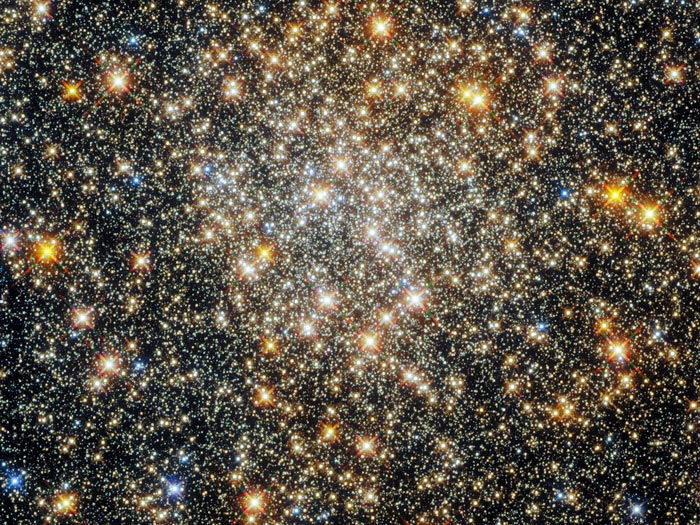Hubble captures a cluster in the heart of the Milky Way

This sparkling starfield, captured by the NASA/ESA Hubble Space Telescope’s Wide Field Camera 3 and Advanced Camera for Surveys, contains the globular cluster ESO 520-21 (also known as Palomar 6).
Credit: ESA/Hubble and NASA, R. Cohen
This sparkling starfield, captured by the NASA/ESA Hubble Space Telescope’s Wide Field Camera 3 and Advanced Camera for Surveys, contains the globular cluster ESO 520-21 (also known as Palomar 6). A densely packed, roughly spherical collection of stars, it lies close to the center of the Milky Way, where interstellar gas and dust absorb starlight and make observations more challenging.
Interstellar absorption affects some wavelengths of light more than others, changing the colors of astronomical objects by causing them to appear redder than they actually are. Astronomers call this process “reddening,” and it makes determining the properties of globular clusters close to the galactic center – such as ESO 520-21 – particularly difficult.
ESO 520-21 lies in the constellation Ophiuchus, near the celestial equator. Ophiuchus was one of the 48 constellations included in the writings of the second-century Egyptian astronomer Ptolemy, all of which are among the 88 constellations officially recognized by the International Astronomical Union today.
Text credit: European Space Agency (ESA)
Image credit: ESA/Hubble and NASA, R. Cohen
Media Contact:
Claire Andreoli
NASA’s Goddard Space Flight Center
301-286-1940
All latest news from the category: Physics and Astronomy
This area deals with the fundamental laws and building blocks of nature and how they interact, the properties and the behavior of matter, and research into space and time and their structures.
innovations-report provides in-depth reports and articles on subjects such as astrophysics, laser technologies, nuclear, quantum, particle and solid-state physics, nanotechnologies, planetary research and findings (Mars, Venus) and developments related to the Hubble Telescope.
Newest articles

Compact LCOS Microdisplay with Fast CMOS Backplane
…for High-Speed Light Modulation. Researchers from the Fraunhofer Institute for Photonic Microsystems IPMS, in collaboration with HOLOEYE Photonics AG, have developed a compact LCOS microdisplay with high refresh rates that…

New perspectives for material detection
CRC MARIE enters third funding period: A major success for terahertz research: Scientists at the University of Duisburg-Essen and the Ruhr University Bochum have been researching mobile material detection since…

CD Laboratory at TU Graz Researches New Semiconductor Materials
Using energy- and resource-saving methods, a research team at the Institute of Inorganic Chemistry at TU Graz aims to produce high-quality doped silicon layers for the electronics and solar industries….



